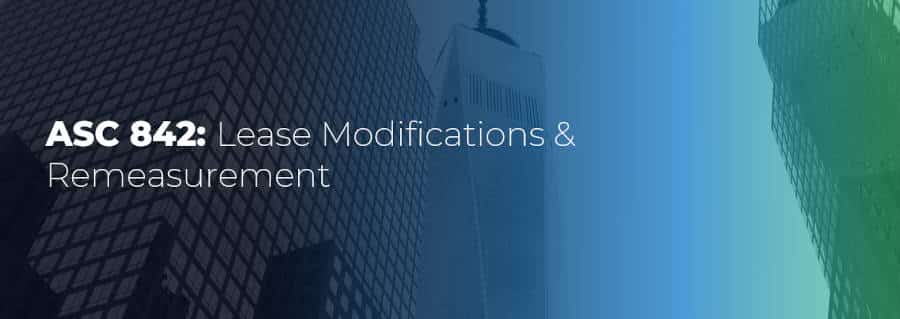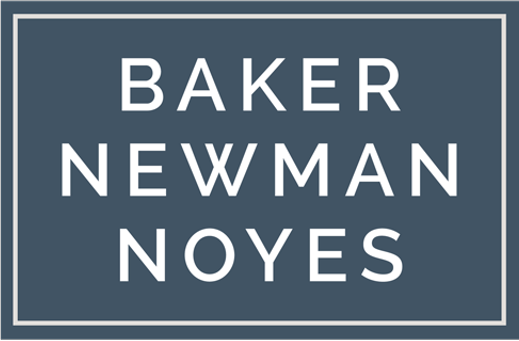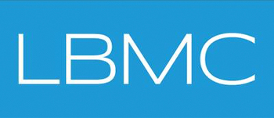ASC 842 Summary: What lessees need to know
Updated 13th January 2025 | 10 min read Published 10th December 2020

Replacing FASB ASC 840, the revised ASC 842 was published in 2016 along with the associated and similar IASB IFRS 16. For public listed companies it came into effect for fiscal years and interim accounting periods beginning after December 19, 2018 and private companies were scheduled for compliance from those periods beginning December 15, 2019.
In response to the effects of Covid-19 FASB voted in April 2020 to approve that:
- For private companies and private not-for-profit entities, the leasing standard will be effective for fiscal years beginning after December 15, 2021, and interim periods within fiscal years beginning after December 15, 2022
- For a deferral of effective date for public not-for-profit entities that have not yet issued GAAP compliant financial statements to fiscal years beginning after Dec. 15, 2019, including interim periods within those fiscal years.
Some new dates for the diary, here, though any affected business will already be working with those dates very much in mind.
What is new with ASC 842
In summary, it is the new “leases” accounting standard which essentially no longer allows for significant financial liabilities to be held off-balance sheet. Previously lessees guided initially by FAS 13 and subsequently by ASC 840 were required only where leases that met certain financial thresholds to have those leases represented on the balance sheet. It was those latest ASC 840 regulations, in the wake of the collapse of ENRON and the Sarbanes-Oxley Act, that were identified by FASB as needing to change. Working closely with the International Accounting Standards Board and taking more than a decade to realize, details of ASC 842 were published in 2016 under ASU 2016-02.
So, the standout feature of ASC 842 is that it requires organizations with lease assets to recognize all leases as assets and liabilities, whether classified as operating leases or financing leases, with the exception of certain optional exemptions. For the lessee, the recognition under ASC 842 of more lease-related assets and associated liabilities, together with changes to the timing of lease expense recognition, has significant financial reporting and business implications.
Compliance with the new accounting standard is more complicated and demands a higher level of internal effort including the:
- Unearthing all of the extant lease agreements within the organization
- Getting to grips with the “right of use” asset concept (RoU)
- Creation of new workflows to manage these agreements and associate assets
- Accounting for the new monthly closing process around those RoU assets
What do I need to know with ASC 842?
There are many aspects to the new standard that will need to be grasped and understood but as a very minimum the following need to be researched by lessees and familiarized with in order to estimate the workload to implementation.
- A contract is, or contains, a lease if it conveys the right to control the use of an identified asset for a period of time in exchange for consideration.
- The identified asset is now known as a right-of-use asset and must be represented on the balance sheet. Get familiar with the term “RoU” asset and use it.
- The lease payments the lessee makes on the agreement for the RoU asset(s) have to be reported as a lease liability on your balance sheet.
- The right-of-use (ROU) asset and liability are recorded by calculating the present value (PV) of the lease payments using the appropriate discount rate.
- Where included in the main lease payments, any maintenance, cleaning, servicing etc charges have to be identified as non-lease elements and reported separately.
- The interest element of any rental payment must be separated out and included on the profit and loss account.
- While Property, Plant and Equipment (PPE) are included within the scope of ASC 842, unlike with IFRS 16, intangible assets are not.
- The profit and loss components of a RoU asset and corresponding liability are amortized under the straight-line method and presented together as rent or lease expense.
Does ASC 842 offer me any help or shortcuts?
The good news for lessees is that there are real options and “shortcuts” available to reduce the workload, have the financial reporting impact lessened and to assist in ongoing compliance. Some of these are available under IFRS 16 but not all!
Short Term Leases
Under US GAAP, a short-term lease is defined as a lease that is 12 months or less without a purchase option that the lessee is likely to exercise. By adopting the “short-term lease exemption” a business can continue to treat any such lease as an operating lease under ASC 840 meaning there is no need to capitalize short-term leases and record the right-of-use (ROU) asset and associated liability on the balance sheet as per ASC 842. The obvious benefit is that this practical expedient will save time and resource in capitalizing leases, but lessees will still need, as before, to disclose them, and their value, in the footnotes of financial statements.
Private Company Discount Rate Expedient
Offering a straightforward alternative to help resolve one of the more complex requirements of placing an operating lease on the balance, this expedient allows private companies to set the discount rate, if not known, as their risk-free interest rate in either of these two circumstances:
- Rather than calculating the applicable incremental borrowing rate (IBR) or
- Where the lease contract has no implicit discount rate
The obvious benefit is a valuable saving in time and resource but a downside may be that as the risk-free interest rate is typically very low, the result of using it may be a higher liability on the balance sheet.
Further Practical Expedients available under ASC 842
The expedients explained above are all individual and stand-alone in that a lessee can elect to use any or all of them. However, if opted for, this last set of expedients must be taken as a package. Applying to lessees and lessors alike, if this package is adopted, the real saving and tangible benefit is that there is no requirement to reassess the Initial Direct Costs of existing leases on adoption of ASC 842. The three expedients, which come as a package, all relate to leases that are extant at the adoption of ASC 842 and –
Making the presumption that companies are already accounting for leases correctly under ASC 840, lease contracts do not have to be reassessed as to whether they contain a lease. This addresses the issue of “Embedded Leases”.
Assuming there were no classification errors under ASC 840 then, under the second expedient, companies need not reclassify leases – if they were operating leases under ASC 840, they can remain operating leases under ASC 842. Likewise, existing capital leases remain capital leases though under ASC 842 they will now be referred to as “finance leases”.
Previously under ASC 840, an entity could allocate the internal costs of acquiring a lease to Initial Direct Costs. Under ASC 842, Initial Direct Costs are now defined as costs that would not have incurred had a lease not been acquired – typically external costs. The third and final practical expedient in this package negates the requirement to reassess any Initial Direct Costs in existing leases – initial direct costs capitalized under ASC 840 also qualify to be capitalized under ASC 842.
Hindsight Expedient Applied to ASC842 Transition Requirements
Specifically, for the periods that are being compared or restated, another practical expedient — hindsight — can be used either with the package of expedients described above or alone but if adopted it must be applied to all leases that are live during the comparative period and may, therefore, prove a drain on resources for a company with a large lease portfolio. It allows a company to consider when determining lease classifications, the actual impact of previously evaluated lease renewals, termination options, and purchase options. Hindsight can be used to:
- Determine the lease term based on the likelihood of exercising lessee options to extend or terminate a lease or to purchase the underlying asset and
- Assess any impairment of right-of-use assets.
Practical Expedient Combining Lease and Non-Lease Components
With ASC 842 transitioning and compliance, a company is set the task of evaluating any fixed consideration and allocating it across both the lease and non-lease components of each and every contract. Rather than set out on this onerous task, this expedient allows a company to simply calculate the present value of the fixed payments without having to perform an allocation to the lease and non-lease components.
Additionally, there is the flexibility to apply or not apply the expedient according to the class of underlying asset – it may prove sensible to apply the expedient to all real estate leases but not equipment leases, where the class of asset makes evaluating lease and non-lease components (such as maintenance) easier to determine. This expedient may over flexibility, but it must be applied consistently across similar non-lease components.
Practical Expedient for Restating Prior Year Financials
Under ASC842, lessees adopting the new standard on January 1, 2020 need to recognize and measure any leases on their portfolio as of January 1, 2018 in their comparative financial statements. This practical expedient gives lessees the option to apply the new guidance at its effective date (in this case January 1, 2020) simplifying the transition requirements of the new leases standard by allowing a lessee to ignore not only any leases that expired prior to the effective date but also the effects of lease modifications during the comparative periods. Instead of raising comparative financial statements for prior years (here for 2018 & 2019) the company would recognize a cumulative adjustment in equity as of January 1, 2020.
Materiality
Set at $5,000 for the IASB standard, IFRS 16, the materiality threshold means that leases for assets under that amount do not need to be capitalized and accounted for on the balance sheet. Under ASC 842 there is no set threshold for materiality. As we have seen, a lessee now records the RoU asset with its other long-term assets just as if they had purchased the asset. Just as when a purchased asset is less than the dollar amount determined to be immaterial to the overall financial statements of a lessee, the full value of that asset is expensed upon purchase then similarly, if an ROU asset is less than that same dollar amount, the lease payments are all expensed and the ROU asset and any associated rental liabilities are not reflected on the balance sheet. This may offer the chance to mitigate the workload where a lessee has many low-value assets on many leases, but lessees beware that altogether they may come to a material liability when debt covenants are in place. Additionally, similar RoU asset types should be treated in the same manner where thresholds and materiality are concerned.
Take them or leave them
While a practical expedient might save you time, lessees are wise to be prudent and consider the potential impact on financial reporting by estimating not only the savings and benefits but also the impact on the balance sheet of the ASC 842 practical expedients. Impact modeling is available and may be both relevant and desirable.
Having a comprehensive understanding of the new standard and the various exemptions and practical expedients available will play a vital role when making considered business decisions when transitioning and applying ASC 842. When evaluating the practical expedients available, IRIS Lease Accounting strongly recommends and encourages preparers to engage with their auditors.
If you’re looking for further guidance on how to effectively transition to the new standard or if you have any other questions around how it could impact your organization. Download our free guide, ‘The 7 Steps to Lease Accounting Compliance’.
If you are interested in finding out how lease accounting software can help streamline and accelerate your ASC 842 compliance project, why not request a free demo and consultation today.
Disclaimer: this article contains general information about the new lease accounting standards only and should NOT be viewed in any way as professional advice or service. The Publisher will not be responsible for any losses or damages of any kind incurred by the reader whether directly or indirectly arising from the use of the information found within this article.




